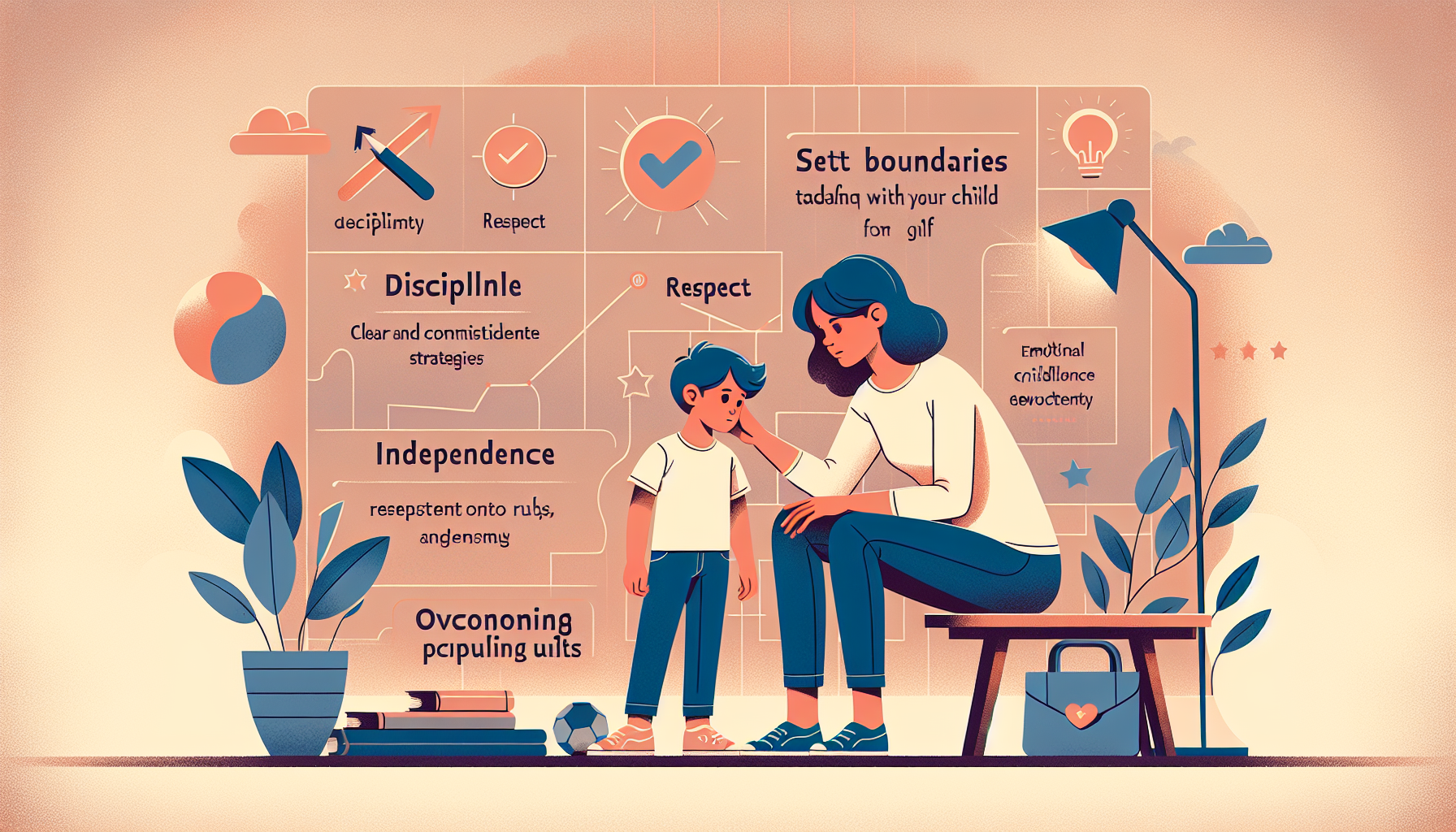“`html
How to Set Boundaries with Your Child
Setting boundaries is a cornerstone of effective parenting. It helps children learn discipline, respect, and independence while fostering healthy parent-child relationships. In this article, we’ll explore the importance of boundaries, practical advice for implementing them, and how they can positively impact your child’s development.
Why Are Boundaries Important for Children?
Boundaries are essential for creating a safe and structured environment where children can thrive. They serve as a guide for acceptable behavior, helping children understand their limits and build emotional resilience. From a psychological perspective, boundaries meet core needs such as:
- Safety: Clear rules and expectations give children a sense of security and stability.
- Autonomy: Boundaries teach children how to make decisions within a structured framework.
- Self-expression: They encourage open communication while ensuring respect for others.
Without boundaries, children may struggle with self-control, experience anxiety, or have difficulty respecting authority. Establishing boundaries early sets the stage for healthy emotional and social development.
Key Principles for Setting Boundaries
To effectively set boundaries with your child, it’s essential to follow these principles:
1. Be Clear and Consistent
Children need clarity to understand what is expected of them. Clearly communicate the rules and explain the consequences of breaking them. Consistency is equally important—if a rule applies today, it should apply tomorrow as well.
2. Use Age-Appropriate Rules
Tailor your boundaries to your child’s age and developmental stage. For instance:
- Toddlers: Focus on simple rules like “no hitting” or “no touching the stove.”
- School-aged children: Introduce more complex responsibilities, such as homework routines or screen time limits.
- Teenagers: Allow more autonomy, but set rules around curfews and social media usage.
3. Balance Authority with Empathy
While it’s important to enforce rules, showing empathy builds trust and strengthens your relationship. For example, if your child is upset about a rule, acknowledge their feelings and explain why the rule exists. This approach aligns with cognitive-behavioral therapy (CBT), which emphasizes understanding emotions to modify behavior.
4. Lead by Example
Children learn by observing their parents. Model the behavior you want them to adopt—whether it’s respecting others’ boundaries or managing emotions constructively. For example, if you expect your child to speak politely, ensure you do the same in your interactions.
Practical Tips for Setting Boundaries
Here are actionable steps to help you set and maintain boundaries with your child:
- Start Small: Begin with one or two key rules and gradually add more as your child adapts.
- Use Positive Reinforcement: Recognize and reward good behavior. For instance, praise your child when they follow a rule or complete a task without being reminded.
- Explain the Consequences: Ensure your child understands the outcomes of their actions. For example, if they don’t finish their homework, they might lose screen time.
- Stay Calm: When enforcing rules, maintain a calm and composed demeanor. Reacting with anger can escalate the situation and make it harder to resolve.
- Allow Choices: Empower your child by giving them options within the boundaries. For example, instead of saying, “Go to bed now,” you could say, “Would you like to read a book or listen to music before bed?”
- Be Flexible When Needed: While consistency is key, there are times when flexibility is appropriate. For example, if your child is feeling unwell, you might adjust their bedtime routine.
Common Challenges and How to Overcome Them
1. Resistance to Rules
It’s natural for children to test boundaries. When this happens, stay firm and remind them of the rules. Consistent enforcement will help them accept the limits over time.
2. Parental Guilt
Many parents feel guilty about setting boundaries, fearing they might upset their child. Remember, boundaries are an act of love—they provide structure and help your child grow into a responsible adult.
3. Lack of Follow-Through
If you struggle to enforce rules, establish a routine that keeps you accountable. For example, set reminders to check on your child’s chores or homework progress.
Benefits of Setting Boundaries
When you set boundaries effectively, you’ll notice several positive changes in your child and your relationship with them:
- Improved Behavior: Clear rules reduce confusion and help children make better choices.
- Stronger Relationships: Boundaries build trust and respect between parents and children.
- Increased Confidence: Knowing their limits gives children a sense of security and self-assurance.
- Better Communication: Open discussions about rules encourage healthy conversations and mutual understanding.
“`

